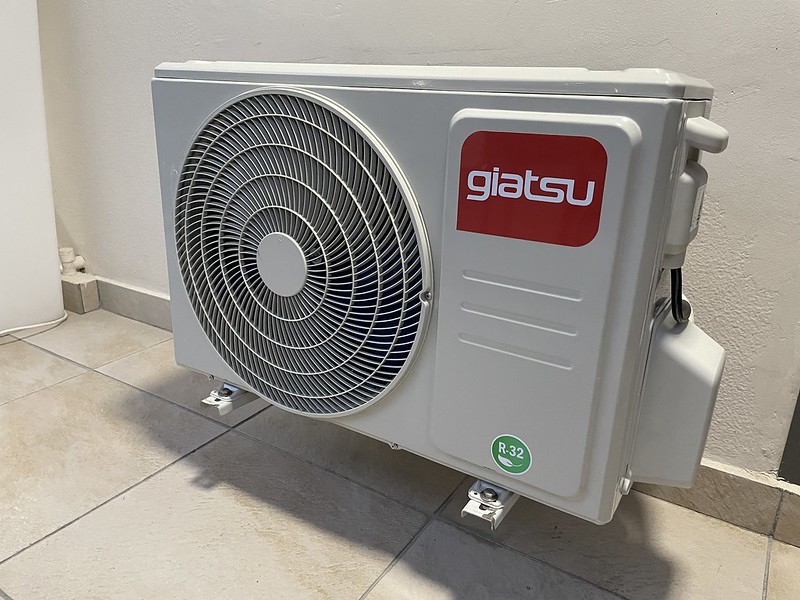In a mini-split air conditioning system, it is common for both the liquid line and the suction line (also known as the vapor line) to be cold, even though the liquid line is not a true liquid line. This phenomenon can be attributed to the unique design and operation of mini-split systems, which differ from traditional central air conditioning systems. Understanding the reasons behind this can help homeowners and HVAC technicians better diagnose and troubleshoot any issues related to the temperature of the refrigerant lines.
The Role of the Metering Device
The primary reason why both lines on a mini-split are cold is the location of the metering device, which is typically situated in the outdoor unit rather than the indoor unit as in traditional systems. The metering device, also known as the expansion valve, is responsible for regulating the flow of refrigerant into the evaporator coil.
In a mini-split system, the metering device is located in the outdoor unit, which means that the refrigerant experiences a significant pressure drop and temperature drop as it passes through the valve. This pressure and temperature drop occurs not only in the liquid line but also in the suction line, as the refrigerant flows back to the compressor.
As a result, both the liquid line and the suction line become cold, with the suction line being slightly warmer than the liquid line due to the heat absorbed from the surrounding air as the refrigerant flows back to the compressor.
The Liquid Line: A Vapor-Liquid Mixture
It is important to note that the “liquid line” in a mini-split system is not a true liquid line, but rather a vapor-liquid mixture. This mixture is the result of the pressure and temperature drop that occurs as the refrigerant passes through the metering device.
The refrigerant in the liquid line is not a pure liquid, but rather a combination of liquid and vapor particles. This vapor-liquid mixture is still cold enough to cause condensation on the line, which is why the liquid line feels cold to the touch.
Insulation and Compressor Protection
The insulation on the liquid line serves an important purpose in protecting the compressor from overheating. As the refrigerant flows through the liquid line, it absorbs heat from the surrounding environment. This added heat can increase the temperature of the refrigerant, which can then lead to increased compressor load and potential overheating.
By insulating the liquid line, the amount of heat absorbed by the refrigerant is minimized, helping to maintain the optimal operating temperature of the compressor. This insulation helps to prolong the lifespan of the compressor and prevent premature failure due to overheating.
Troubleshooting Cold Lines
If both the liquid line and the suction line on a mini-split system are cold, it is generally an indication that the system is operating as intended. However, there are a few potential issues that can arise that may cause the lines to be colder or warmer than expected:
- Refrigerant Charge: If the system is undercharged with refrigerant, the lines may be colder than normal. Conversely, an overcharge can cause the lines to be warmer than expected.
- Airflow Issues: Restricted airflow over the outdoor unit’s coil can cause the refrigerant to be colder than normal, leading to colder lines.
- Metering Device Malfunction: If the metering device is not functioning properly, it can cause imbalances in the refrigerant flow, leading to unexpected line temperatures.
- Insulation Damage: Damage to the insulation on the lines can allow heat transfer, causing the lines to be warmer than expected.
To diagnose and address any issues related to the temperature of the refrigerant lines, it is recommended to consult a qualified HVAC technician who can perform a comprehensive system evaluation and make the necessary adjustments or repairs.
Conclusion
In summary, the presence of cold lines on both the liquid and suction sides of a mini-split air conditioning system is a normal and expected phenomenon. This is due to the location of the metering device in the outdoor unit, which causes a significant pressure and temperature drop in the refrigerant. The liquid line is not a true liquid line, but rather a vapor-liquid mixture that is still cold enough to cause condensation. The insulation on the liquid line is crucial for protecting the compressor from overheating by minimizing the amount of heat absorbed by the refrigerant. By understanding the underlying principles behind this behavior, homeowners and HVAC technicians can better diagnose and address any issues related to the temperature of the refrigerant lines in a mini-split system.
References:
– Forum discussion on Mitsubishi split refrigerant line sweating water
– HVAC-Talk discussion on cold liquid line at condenser
– Reddit discussion on why the liquid line gets insulated on mini-splits
– JustAnswer discussion on mini-split lineset lines being insulated
– Physics Stack Exchange question on the high-pressure line on a ductless mini-split air conditioner

